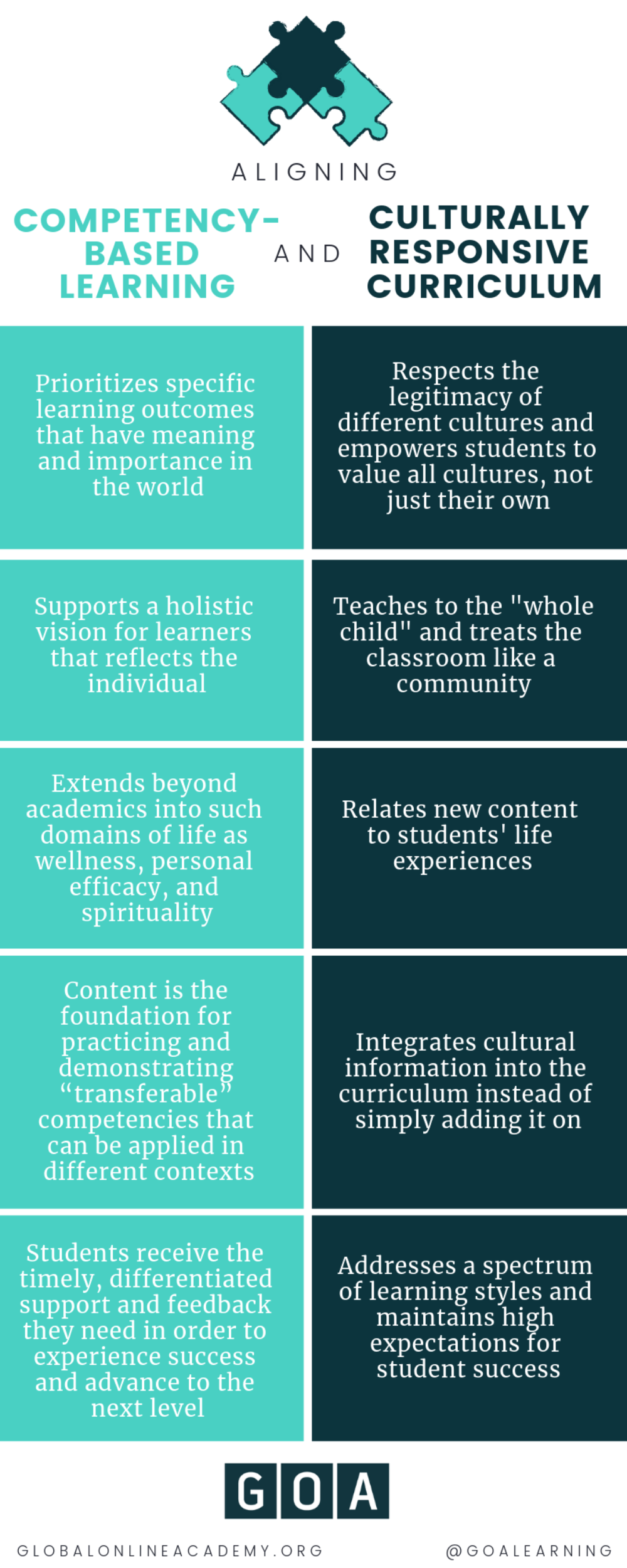How Competency-Based Learning Supports Culturally Responsive Curriculum
Equity & Equality In the Classroom
I recently attended the National Association of Independent School’s People of Color Conference, an event that I always find to be both an intellectually stimulating and an emotionally taxing professional learning experience. As an educator of color, I feel inspired by the wide array of pedagogical innovations occurring in classrooms across the country to promote equity, from using deeper learning to promote strategic self-advocacy, to incorporating anti-racist teaching into the math classroom. At the same time, I feel daunted by all of the work that needs to be done in order to achieve equity in our schools.
The Importance of Designing Culturally Inclusive Classrooms
In my three years of attending POCC, one theme always rises to the surface: how critical it is for schools to design culturally aware and inclusive learning experiences. Culturally responsive pedagogy comes up quite a bit at the conference, a critical facet of which is culturally responsive curriculum. Students need to be able both to see themselves and their lived experiences reflected in their curriculum and to gain exposure to people and cultures that are vastly different from the ones they know. They need to read and see stories that celebrate people of color in nuanced ways, that don't treat them as caricatures featured in stories of suffering and oppression.
Yet, even schools that have taken the initiative to develop courses that focus on equity and inclusion often categorize those courses as electives. From my time in the classroom, I can vividly recall my students of color lamenting about how the stories of their people were often relegated to electives that students could opt out of.
From Elective Classes to a Seamlessly Inclusive Curriculum
Maybe it doesn’t have to be this way. A shift to competency-based learning (CBL) can increase opportunities to make curriculum more culturally responsive. CBL has already been lauded for its potential to promote equity in schools in a different way. From a learner standpoint, the promise of CBL is to ensure high outcomes for all students and interrupt inequitable teaching practices.
With that equity-focused ideology underpinning CBL, the environment is ripe to incorporate culturally responsive curriculum. Chris Sturgis, formerly of Competency Works, recently wrote, “There are so many practices that are valuable in culturally responsive education that are either the same or similar enough to make personalized learning become a catalyst for racial equity.”
Aligning Competency-Based Learning and Culturally Responsive Curriculum
Competency-based learning encompasses the knowledge, skills, and dispositions needed for purposeful, meaningful, and productive life in the world beyond school. Fundamentally, the aim is to create well-rounded learners with transferable, lifelong skills. Content is deemphasized, and students advance based on mastery of competencies rather than seat time.
To learn more about competency-based learning, check out this series of articles.
Educating the Whole Child: The Foundational Benefits of a Culturally Responsive Curriculum
Fundamentally, competency-based learning creates space and room for a culturally responsive curriculum to emerge. If content merely becomes a vehicle through which competencies are taught, it’s possible for the curriculum to serve as both a mirror of our students’ lived experiences and a window that reveals alternate ways of life. With CBL’s emphasis on personalization and differentiation, schools can fully engage in educating the whole child, regardless of where they’re from.
Before I identify some action items for schools, take a look at the below infographic outlining essential connections between CBL and culturally responsive curriculum. I encourage you to share and discuss!

Incorporating a Culturally Responsive Curriculum through Competency-Based Learning
Implementing CBL won’t automatically create a culturally responsive curriculum; it only serves to loosen existing constraints. Schools and departments will still need to make intentional, deliberate choices in how to rethink the role of content and curriculum to make it more inclusive.
Three Actions We Can Take:
- School leaders need to make equity and inclusion in the curriculum an institutional priority. Leadership should consider allocating part of the professional development budget to training faculty and staff in culturally responsive pedagogy both onsite and at external conferences such as POCC and the White Privilege Conference.
- Directors of Equity and Inclusion should work in conjunction with department chairs to develop a rubric to review and evaluate how culturally responsive their curriculum is, and schools should create a committee of faculty and staff to assist with that review.
- Teachers should be allotted faculty work time during the school year and compensation during the summer to revise curriculum. Doing so will go a long way in engendering goodwill and incentivizing the change that is needed in our schools.
To learn more about how specific schools schools are thinking about the relationship between CBL and CRC, sign up for Rethinking the Role of Content, a GOA educator course that will run from November 4-8, 2019.
